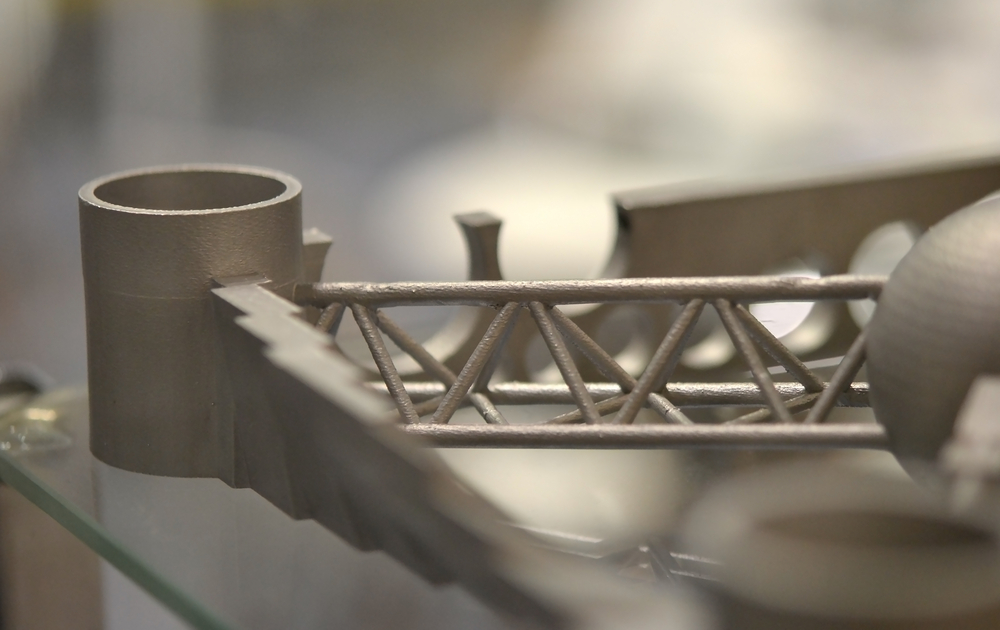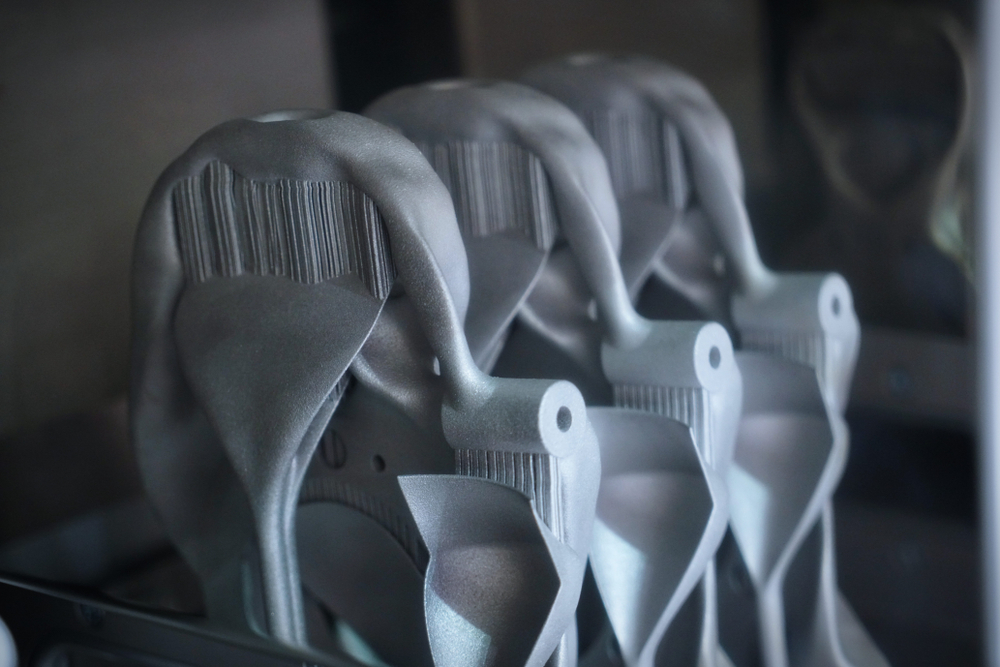Additive manufacturing has been expanding into many industries over the past several years. The 3D printing solutions used in additive manufacturing have many advantages over traditional manufacturing. Companies looking to increase agility, reduce costs, and become more resilient to supply chain disruptions should consider the advantages of additive manufacturing to improve traditional manufacturing processes and to directly produce finished parts.

What is Additive Manufacturing?
Additive manufacturing (AM), sometimes known as additive layer manufacturing (ALM), applies 3D printing at an industrial scale. 3D printers build parts by depositing a specialized material in layers to build up the part or product. This process is digitalized and computer-controlled, yielding three-dimensional objects, possibly with very complex geometries.
Additive manufacturing’s advantages lie in two areas: a direct production method or one that supports traditional manufacturing processes. Innovative companies in a range of industries, spanning from aerospace to medical devices to industrial parts, use additive manufacturing to produce complex and custom parts that may not be possible with traditional processes.
Additive Manufacturing for Direct Production
The primary characteristic that distinguishes additive manufacturing from traditional processes is the lack of tooling. The elimination of tooling means an additive manufacturing facility operates with lower CAPEX requirements, especially compared to injection molding. Additive manufacturing provides many other advantages when used in direct production:
- On-demand production: Can quickly put qualified designs into production without the need for additional tooling. The digital process also means production can be scaled on-demand.
- Reduce held inventory: Because companies plan production on-demand, they can reduce the held inventory and produce parts when needed.
- Increase agility: If a design needs to be modified, a company may use the same process to produce the modified design without incurring tooling costs. Companies remain responsive to customer demand or quickly produce a new SKU on-demand.
- Localize manufacturing: Additive manufacturing facilities eliminate CAPEX for injection mold tooling and reduce the labor required for production, making it easier to set up more facilities closer to end customers in higher-cost regions. Localization reduces logistics costs and delivers products to customers faster.
- Unique and customized designs: Designers use additive manufacturing processes with a range of complex or individually customized designs that traditional manufacturing can’t produce. Increased design freedom enables choices like part consolidation and unique internal support structures. A popular phrase in additive manufacturing is “complexity is free.” Many industries are using additive manufacturing to deliver custom products: dental, medical, footwear, and eyewear.
With the availability of new printing systems, advanced materials, and specialized processes, more companies apply additive manufacturing advantages in their production operations. Companies also have the option to use additive manufacturing in a supporting role within traditional manufacturing processes.

Additive Manufacturing to Support Traditional Production
Additive manufacturing also supports traditional manufacturing operations in innovative ways. Companies can use 3D printing throughout the product development process, ranging from prototyping to supporting full-scale manufacturing operations.
- Printing jigs and fixtures: 3D printing produces custom tooling for use in a traditional fabrication or assembly process. One example is printing fixtures to hold workpieces during the assembly or quality control processes.
- Supporting injection molding: Many high-temperature-resistant materials are 3D-printed and used as inserts into injection molding designs. This addition can reduce the cost of mold creation and enable the production of more complex parts with injection molding.
- Customizing injection molding: Designers don’t have much freedom in terms of structure with parts designed for injection molding, but additively manufactured inserts allow some injection molded parts to be customized.
- Design exploration: Companies design prototypes, print them in batches, and perform thorough tests before transitioning into full-scale production. This ability to 3D print and test a larger variety of functional parts increases the number of designs investigated while reducing overall product development time and costs.
- Complementing traditional processes: Additive manufacturing is more competitive in terms of low-volume costs. It gives a lower-cost option when a production run does not make sense with a conventional injection molding or CNC milling process.
Some Disadvantages of Additive Manufacturing
Additive manufacturing is not ideal for all products or companies. Those considering additive production processes should weigh the disadvantages. 3D printing processes, materials, and systems are constantly developing, but there are three primary disadvantages to keep in mind:
- Build volume and material limitations: The printing system’s build volume can limit the maximum size of a 3D-printed part, meaning larger parts require a larger printer. Not all materials can be 3D printed, and material properties need to match the application and be compatible with the 3D printers.
- Cost vs. production volume: Like traditional manufacturing, the capital equipment cost is amortized over the production volume. Lower volume has higher equipment cost. High throughput 3D printers lower amortized cost per unit produced. However, traditional high volume production methods like injection molding achieve lower unit cost when producing millions of the same parts. Additive manufacturing is a better option for low-volume, high-mix manufacturing.
- Post-processing: Certain 3D printing systems and products may require extensive post-processing steps, depending on the printing technology, materials used, and the product’s end application and complexity. Next-generation 3D printing systems eliminate many of these post-processing steps, simplifying 3D printing production.
The above list of advantages and disadvantages shows that additive manufacturing is optimum when production volume is low, the mix is high, and products are complex. On-demand production with no need for tooling is a significant advantage of additive manufacturing, enabling an agile business model with on-demand production and potential for higher profitability.
If you want to see the advantages of additive manufacturing, LuxCreo provides the best 3D printing systems. They use the LEAP™ (Light Enabled Additive Production) process and can deploy at scale. LuxCreo’s system of cloud-connected 3D printers also helps you scale with on-demand production in an overseas smart factory. For more information on how our services can improve your supply chain and manufacturing processes, visit our contact page or call (650) 336-0888.
